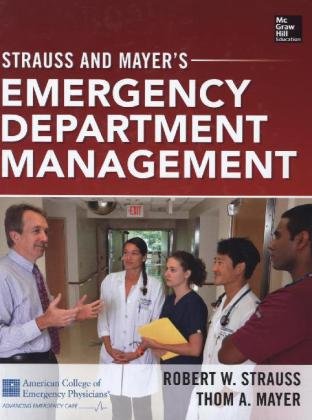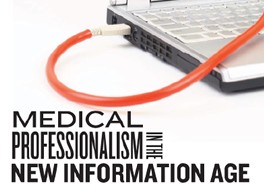 Chief Editors: Robert W. Strauss, MD and Thom A. Mayer, MD
Chief Editors: Robert W. Strauss, MD and Thom A. Mayer, MD
Publisher: McGraw-Hill – 760 pages
Book Review by: Nano Khilnani
This book is useful to hospital administrators, particularly to heads of the emergency department (ED) at hospitals. We can best describe it as a healthcare institution “management manual” on how to provide quality care to patients in the best and most cost-efficient way. Sometimes the best care cannot be provided most cost-effectively, but that does not mean giving up the effort to overcome this challenge.
The chapters for this book were authored by 160 specialists in varied areas of management of emergency departments of medical centers, professors of emergency medicine, and other medical entities that deal with emergency care.
Nearly two of every five people visited the emergency department (ED) of a hospital in 2013 in the United States, or an astounding 125 million of the country’s nearly 320 million current population. Of these visits, 38 million or about 30 percent were injury related, the editors also point out in their Preface to this book.
So one wonders: what were the reasons for which the other 87 million people or 70 percent of the total 125 million people went to the emergency departments of hospitals? I personally believe, although the editors do not explicitly point out, that most visitors had a medical problem for which they wanted to get treated immediately either to save time or money or both.
Under law, emergency departments of hospitals in the United States cannot deny care to anyone in need, regardless of their ability to pay. “The ED has become the most frequent point of entry into inpatient care,” according to 2013 Rand Corporation report that the editors refer to. This report points out that the ED also provides non-emergency services such as:
- Complex diagnostic workups
- Overflow from physicians’ heavy workload
- After-hours and weekend demand for care
Physicians and other healthcare professionals in this part of hospitals “are increasingly serving as the major decision-makers for approximately half of all hospital admissions in the United States,” the report states.
Healthcare spending consumed nearly 18 percent or over $3 trillion of the country’s $17.1 trillion Gross Domestic Product in the October 01, 2012 to September 30, 2013 period. The $3 trillion expense is projected to grow 7.4 percent to $3.22 trillion by the end of the 2013-2014 fiscal year, according to the Centers for Medicare and Medicaid Services.
Approximately one-third of U.S. healthcare dollars are currently spent on patients admitted to hospitals. Providers of emergency care are therefore being “increasingly scrutinized,” Drs. Strauss and Mayer write, and “their decisions have substantial financial implications for bulging healthcare expenditures.”
In view of these facts, the editors stress that “all ED leaders are obligated to engage in the healthcare debate, and in so doing:
- Analyze their services
- Ensure increasing value
- Institute evidence-based best practices
- Provide a considerate and caring environment
- Build transparent and meaningful information systems
- Inspire teams of caregivers to provide excellence
- Go beyond critical metrics
- Create a team that consistently delivers “acts of kindness…the highest level of compassion…one patient at a time.”
This book covers 12 areas of emergency healthcare administration, with information and guidance provided in as many sections:
- Leadership Principles
- Operations: General
- Operations: Flow
- Operations: Emergency Department Specialization
- Operations: Informatics
- Quality and Service
- Finance
- Reimbursement
- Contracts
- Legal and Regulatory Issues
- Malpractice
- Human Resources
Under each section named above are chapters, totaling 106, which provide detailed discussions of topics within the 12 areas.
This book provides information – and insight based on the experience of the editors and authors – necessary for successful and fiscally-responsible leadership and management of hospitals in general and their emergency departments in particular. The editors named below have done a marvelous job of collecting information from 160 contributors, then organizing and presenting it.
Chief Editors:
Robert W. Strauss, MD, FACEP is Adjunct Professor at the University of Cincinnati Department of Emergency Medicine; Associate Chair at The Christ Hospital Department of Medicine in Cincinnati, Ohio; Senior Vice-President and Chief Medical Officer at TeamHealth East in Woodbury, New Jersey; and Director of the ED Directors Academy at the American College of Emergency Physicians in Dallas, Texas.
Thom A. Mayer, MD, FACEP, FAAP is Chief Executive Officer of Best Practices Inc.: Executive Vice-President of EmCare; Clinical Professor of Emergency Medicine at George Washington University School of Medicine and University of Virginia School of Medicine; Senior Lecturing Fellow at Duke University School of Medicine; Medical Director, NFL Players Association; and Medical Director of Studer Group in Fairfax, Virginia.
Associate Editors:
Kirk Jensen, MD, MBA, FACEP
Barbara Weintraub, RN, MSN, MPH, APNCEN, CPEN, FAEN
Assistant Editors:
Jay Kaplan, MD, FACEP
Richard Salluzzo, MD, FACEP
Section Editors: James J. Augustine, MD, FACEP; Robert A. Bitterman, MD, JD, FACEP; Gregory A Brown, MD; Kathleen J. Clem, MD; Stephen A. Colucciello, MD, FACEP; Diana S. Contino, RN, MBA, FAEN; Jody Crane, MD, MBA; Edward R. Gaines III, JD, CCP; Michael A. Granovsky, MD, CPC, FACEP; Dan Hanfling, MD; Ronald A. Hellstern; MD, FACEP, Kirk Jensen, MD, MBA, FACEP; Kevin M. Klauer, DO, EJD, FACEP; Dighton C. Packard, MD, FACEP; John H. Proctor, MD, MBA, FACEP, FAAP; Matthew M. Rice, MD, JD, FACEP; Jeff Solheim, MSN, RN-BC, CEN, CRFN, FAEN; and Barbara Weintraub, RN, MSN, MPH, APN, CEN, CPEN, FAEN.






